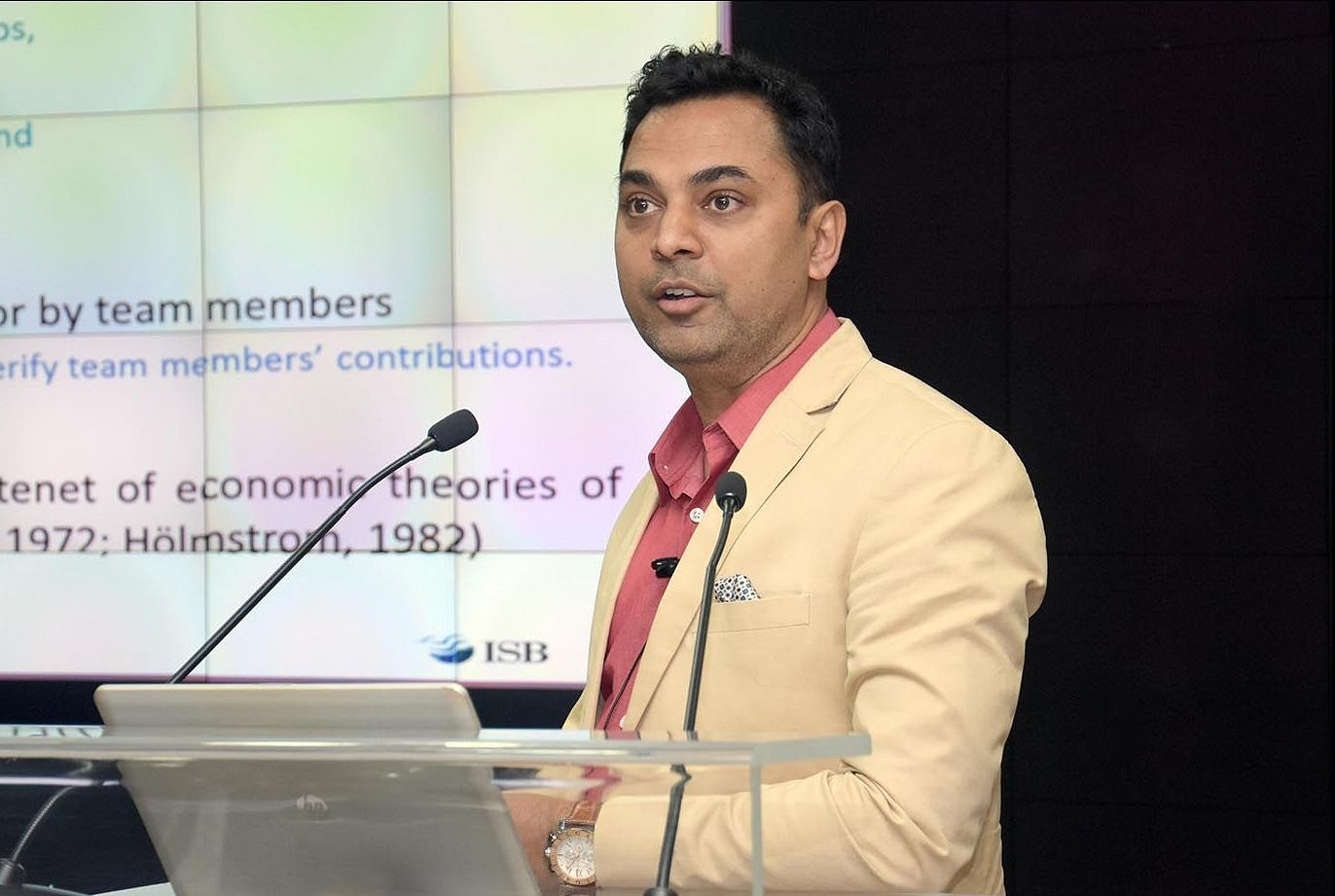Insta
CEA: Deposits/Mcap Ratio Wrong Metric To Gauge Bank’s Health, Our Banks Well Capitalised, No Reason To Worry

Dr Krishnamurthy Subramanian, associate professor at Indian School of Business (ISB). (Wesbite/CAFRAL)
Allaying concerns over Indian banking sector health in the wake of the unfolding Yes Bank fiasco, Chief Economic Adviser Krishnamurthy Subramanian on Sunday said Indian banks are well capitalised and there is no reason to worry.
Pointing out the method of assessing a lender's health based on the ratio of deposit to m-cap (market capitalisation) is wrong, Subramanian said that banking sector expert or banking regulator uses this metric.
The CEA said that capital to risk weighted assets ratio (CRAR) and other such metrics are best used to the gauge the health of banks.
"What banking sector experts and regulators use is what is called the CRAR. It is important to keep this in mind that the international norms for CRAR is 8 per cent and Indian banks on an average have a CRAR of 14.3 per cent.
"So, 8 per cent is the mandated minimum norm and our banks on the average have 14.3 per cent (CRAR). Now 14.3 per cent versus 8 per cent almost translates into 80 per cent greater capital than the international norms," he added.
The CEA further said that the Reserve Bank of India (RBI) mandates the Indian banks to keep CRAR at 9 per cent.
"Even compared to that our banks have 60 per cent more capital. So this is something that is very important."
Elaborating further on why the deposit/m-cap ratio is an incorrect measure to assess the health of the banks, he said the m-cap ratio is essentially the ratio of the deposits that a bank has to its market capitalisation.
"Now if you compare for instance any bank lets say a private sector bank with the State Bank of India, State Bank of India would have an order of magnitude of higher m-cap ratio.
"But the State Bank of India is as safe as the any other bank in the world. In fact it is the only Indian bank to be the part of the top 100 banks internationally."
So this ratio does not really capture the safety of a bank because it is actually affected by the market capitalisation. "As you all know the stock price of a bank can change minute to minute, as a result the m-cap ratio will also change minute to minute but the solvency cannot change minute to minute," Subramanian said.
He also emphasised that the Indian banks on an average have a CRAR of 14.3 per cent, which is way more higher -- about 80 per cent greater than the global measures.
"So our banks on an average are very-very well capitalised, so there is absolutely no reason to worry. Also, the government has increased the limit for deposits that are insured to up to ₹5 lakh, which covers a large majority of the deposits.
"Together with the fact that our banks are well capitalised and the fact that the deposits are well taken care of, there is absolutely no reason for anyone to worry," he said.
(With Inputs from PTI)
Support Swarajya's 50 Ground Reports Project & Sponsor A Story
Every general election Swarajya does a 50 ground reports project.
Aimed only at serious readers and those who appreciate the nuances of political undercurrents, the project provides a sense of India's electoral landscape. As you know, these reports are produced after considerable investment of travel, time and effort on the ground.
This time too we've kicked off the project in style and have covered over 30 constituencies already. If you're someone who appreciates such work and have enjoyed our coverage please consider sponsoring a ground report for just Rs 2999 to Rs 19,999 - it goes a long way in helping us produce more quality reportage.
You can also back this project by becoming a subscriber for as little as Rs 999 - so do click on this links and choose a plan that suits you and back us.
Click below to contribute.
Latest